 Explore the Poowong History Trail »
Explore the Poowong History Trail »
 Explore the Poowong History Trail »
Explore the Poowong History Trail »
In front of us is a plough. A very special silver plough, called a single “Mouldboard” plough. Note the sharp pointed end designed to penetrate, cut and aerate the soil. The blade then rises to a central ridge, creating a one-sided sloping shoulder or Mouldboard. This shapes or moulds (or mulls!) the sod, turning it over so that the upper sod/ vegetation is buried and able to rot – both suppressing weeds and adding organic matter to the soil before sowing crop seeds. The aim of good ploughing is to create a weedfree seedbed, which in return reduces the need of chemicals. Mull over that for a while.
This Poowong plough was typical of that used by the early pioneer settlers, and was obviously steered by hand behind a horse or oxen. Hard work for both beast and human, but crucial in satisfying our ever increasing need to feed.
Ploughs have been around for thousands of years and helped fuel the Agrarian revolution. It’s believed that the first Mouldboard types of plough were used in China about 3,000 years ago, and were introduced into the Netherlands (Holland) in the Seventeenth Century.
Modern plough versions, all towed by tractors of course, manage many more than the single furrow of the Poowong plough in front of you . The most common ploughs types are the Disc, Mouldboard, Reversible Mouldboard and Harrow ploughs. Plus the famous “Stumpjump” plough, designed in South Australia.
In recent years, farmers have turned ploughing into a sport. On 13th April 1965 a group of ten men, who had previously been involved in ploughing contests met at Bayles town hall to form the West Gippsland Ploughing Association. National contests rotate between Vic, NSW & Tasmania.
Poowong has become a major centre for the sport in Australia. Locals such as Ron Richards, Brett and Scott Loughridge and Adrian Tilling have regularly attended World Championship events in Ireland, the Netherlands, Canada and England, in the categories of Conventional, Reversible and Vintage Ploughing.
It’s a precision sport. The skill of the till. It’s all about a steady hand, a good eye, patience, concentration, and years of training. In the sporting arena, ploughing a 20x100 metre stretch of paddock can take 3 hours!! It’s definitely not an adrenalin rush – it’s not about the spills and thrills. Competitors are judged on many aspects including weed control and uniformity. The furrows must be dead straight and neat – “get that furrow right”.
Today we look around at these marvellous rolling green hills of Poowong, with cattle slowly grazing along contoured tracks. But for millions of years, this region was called the Great Forest of South Gippsland, with its immensely tall blue gum, many around the 90 metre mark, and – in the higher country – even taller mountain ash. It was genuine temperate rainforest, creating its own higher rainfall, and with canopy layers down through smaller trees and dense scrub to the dark, dank forest floor.
Early squatters had grabbed huge tracts of the easier land to the west. Then, with the huge rise in immigration, then the aftermath of the gold rush, many unsuccessful newcomers were forced into country such as this. Thick, impenetrable forest for sure, but with marvellous soil, and good rainfall. Trees were felled and land cleared.
Then, along with motor vehicles and improved transport, crops such as peas, potatoes, onions and even flax became possible. Tractors and ploughing became crucial. The Gippsland area became a major producer of food for the fast-increasing population. The plough provided much of the power to satisfy increased production.
The power of the plough!
To explore more of the trail, view the rest of the Poowong History Trail.